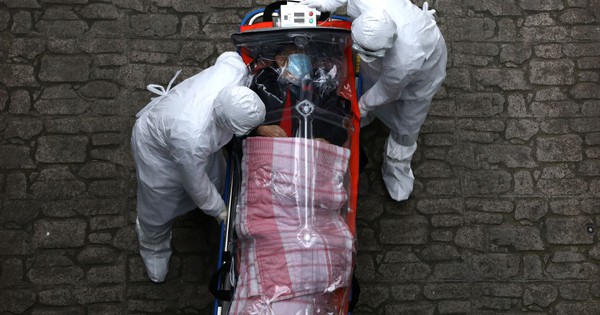How to stop future pandemics in 3 easy steps

In order to prevent future pandemics, we need to change our relationship with wildlife
While many of us are social distancing and self-quarantining and sheltering at home, we have a lot of time to wonder, how did we get in this coronavirus mess in the first place?
Most simply put, the answer is zoonosis (plural: zoonoses). The word comes from the Greek zōon “animal” + nosos “disease,” and it is defined as a disease communicated to humans by animals.
In an article for Wildlife Conservation Society (WCS), Amanda Fine and Aili Kang detail the toll that zoonoses take, writing:
It is estimated that, globally, about one billion cases of human illness and millions of deaths occur every year from zoonoses. Some 60 percent of emerging infectious diseases that are reported globally are zoonoses and of the more than 30 new human pathogens detected in the last three decades, 75 percent have originated in animals.
Coronavirus falls into the category of zoonotic disease, as do SARS, ebola, and MERS. It is widely accepted that humans contracted HIV from chimpanzees, through butchering and eating them; the 1918 flu that killed up to 50 million people had an avian origin.
Unfortunately, we don’t know all that much about zoonotic diseases. Fine and Kang write that in the U.S.-funded PREDICT program, “researchers estimate that there are more than 1.6 million unknown viral species in mammals and birds, 700,000 of which could pose a disease risk to humans.” They add:
“Facing such a vast, unknown and unpredictable universe of zoonotic agents, we firmly believe that limiting the chances of contact between human and wild animals is the most effective way to reduce the risk of emergence of new zoonotic diseases.”
So what does that mean exactly?
1. Stop wildlife trade
2. Stop wildlife consumption
3. Stop destroying nature
WCS has created a cheat sheet, of sorts, to help drive the point home.
The problem is that when we handle or come into close contact with wildlife, we run the risk of a spillover of the pathogens – viruses, bacteria, parasites, and fungi – that they host. While the pathogens don’t make the creatures themselves ill, humans do not have the same immunity, and thus, can become sick.
Dr. Christian Walzer, executive director of the WCS Health Program, says this is a “global health priority that cannot be ignored.” As Fina and Kang note:
It is important to continue calling for three solutions to prevent this complex global challenge: close live animal markets that sell wildlife; strengthen efforts to combat trafficking of wild animals within countries and across borders; and work to change dangerous wildlife consumption behaviors, especially in cities.
Now this may be easy to say here in New York City, sitting in a place of relative privilege – and we must consider if closing wildlife markets will hurt the poor. But as WCS notes, “Wildlife populations are being depleted as they are poached and hunted. Viral outbreaks lead to mass culling of domestic animals, which increases the cost of basic animal protein, hitting the poor the hardest.”
And in the meantime, we need to address the ecosystem destruction as well. There’s been a steady rise of new zoonotic viruses in recent decades, which David Quammen addresses in a piece written for Yale Environment 360. While humans have always been killing wildlife and disrupting habitats, “now that there are seven billion of us on the planet, with greater tools, greater hungers, greater mobility, we’re pressing into the wild places like never before, and one of the things that we’re finding there is… new infections. And once we’ve acquired a new infection, the chance of spreading it globally is also greater than ever.”
In the fantastically informative video below, Dr. Walzer talks specifically of bats, who, because of their unique attributes, have an immune system that allows them to have a lot of viruses without having those viruses cause disease. But when those viruses make the jump to humans, mortality rates can soar.
But you know what? It’s not the bats’ fault. As Walzer points out, in these spillover events a lot of blame gets lobbed at the species where the virus originated, but the most important thing to understand is that humans have “created an environment where humans are in contact with a lot of wildlife species in close quarters and so this creates an environment where viruses can spillover.”
He concludes, “Our relationship with wildlife is what allows these viruses to get in, so let’s think about that and change our relationship to wildlife.”
In order to prevent future pandemics, we need to change our relationship with wildlife
Please enable JavaScript to view the comments.







